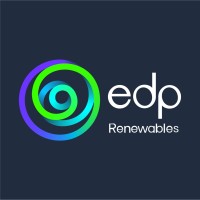Renewable Energy Jobs tagged "Data"
-
Hybrid Full Time 3 days ago
-
-
Hybrid Full Time 4 days ago
-
-
On-site Internship 5 days ago
-
Gdańsk, Poland + 4 locationsFlexible Full Time 5 days ago
-
Flexible Contract Position 6 days ago
-
-
-
Flexible Contract Position 12 days ago
-
Flexible Full Time 12 days ago
-
-
-
-
Data Jobs in Renewable Energy
What Data Roles Actually Involve in Clean Energy
Data professionals in renewable energy don't just crunch numbers. They forecast wind speeds 36 hours ahead to optimize turbine output, predict solar generation to manage grid stability, and build algorithms that prevent equipment failures before they happen. The work spans three core areas: production forecasting (predicting when and how much energy solar panels or wind turbines will generate), grid optimization (balancing variable renewable supply with demand in real-time), and asset performance (using sensor data to schedule maintenance and maximize uptime).
The distinction that matters most: data roles in renewables require domain knowledge about energy systems that pure software companies don't demand. Understanding capacity factors, curtailment, and grid interconnection isn't optional. You're working with SCADA systems, weather APIs, and IoT sensor networks, not just clean datasets. According to the International Renewable Energy Agency, the sector employed 16.2 million people globally in 2023, with data and analytics capabilities increasingly central to operations.
Where Data Professionals Fit
The employer landscape divides into three categories, each with different technical requirements. Energy retailers like Octopus Energy and OVO Energy need data teams for customer analytics, tariff optimization, and demand forecasting. Asset developers and operators such as SSE Renewables and EDP Renewables hire for performance monitoring and predictive maintenance. Energy software companies like Uplight and Eliq build the platforms that utilities use, requiring expertise in Machine Learning, Cloud Computing, and API Development.
Backgrounds that succeed aren't just computer science. Physics, electrical engineering, and applied mathematics graduates transition well because they understand power systems. The hybrid roles matter too: data engineers who can discuss load curves with grid operators, or analysts who grasp why negative pricing happens in wholesale electricity markets.
In-Demand Specializations and Career Trajectory
Job titles cluster around three technical levels. Data Engineers build pipelines from smart meters and turbine sensors. Data Scientists develop forecasting models and optimization algorithms. Senior roles like Lead Data Engineer or Senior Data Scientist typically require experience with time-series analysis, understanding of Energy Analytics, and familiarity with Python Development for modeling.
The field is consolidating around two high-value combinations. First, data professionals who understand both Energy Storage and grid operations command premiums as battery systems become critical for managing intermittent generation. Second, specialists combining Artificial Intelligence with power systems knowledge are increasingly sought for predictive maintenance and automated trading in electricity markets. Entry points exist through analyst positions, particularly at companies scaling operations across European markets in Germany, UK, and Netherlands, where most featured employers concentrate their data teams.
Get Job Alerts
Get alerts for Data jobs
Featured Jobs
Renewable Energy Blog Posts
-

Renewable Energy Forecast for 2030
By 2030, renewables are poised to supply nearly half of global electricity, with solar and wind leading this explosive expansion. In this data-driven piece, we explore job creation forecasts, supply chain bottlenecks, and policy hurdles. -

Fastest Growing Renewable Energy Sector: Data and Trends
In 2023, solar photovoltaics surged by 32.59%, officially making it the fastest-growing renewable energy source worldwide. Yet offshore wind, which soared by 57.87% in 2021, remains a formidable competitor in total electricity output due to its high capacity factor. This concise overview highlights how policy incentives, cost reductions, and manufacturing advances are propelling solar to the forefront of the global energy transition. -

Career Opportunities in Solar Energy
The solar energy sector is experiencing unprecedented growth, with over 7.1 million jobs in solar PV alone as of 2023. For professionals considering a career shift into renewable energy, solar offers pathways across R&D, manufacturing, project development, and operations.




















